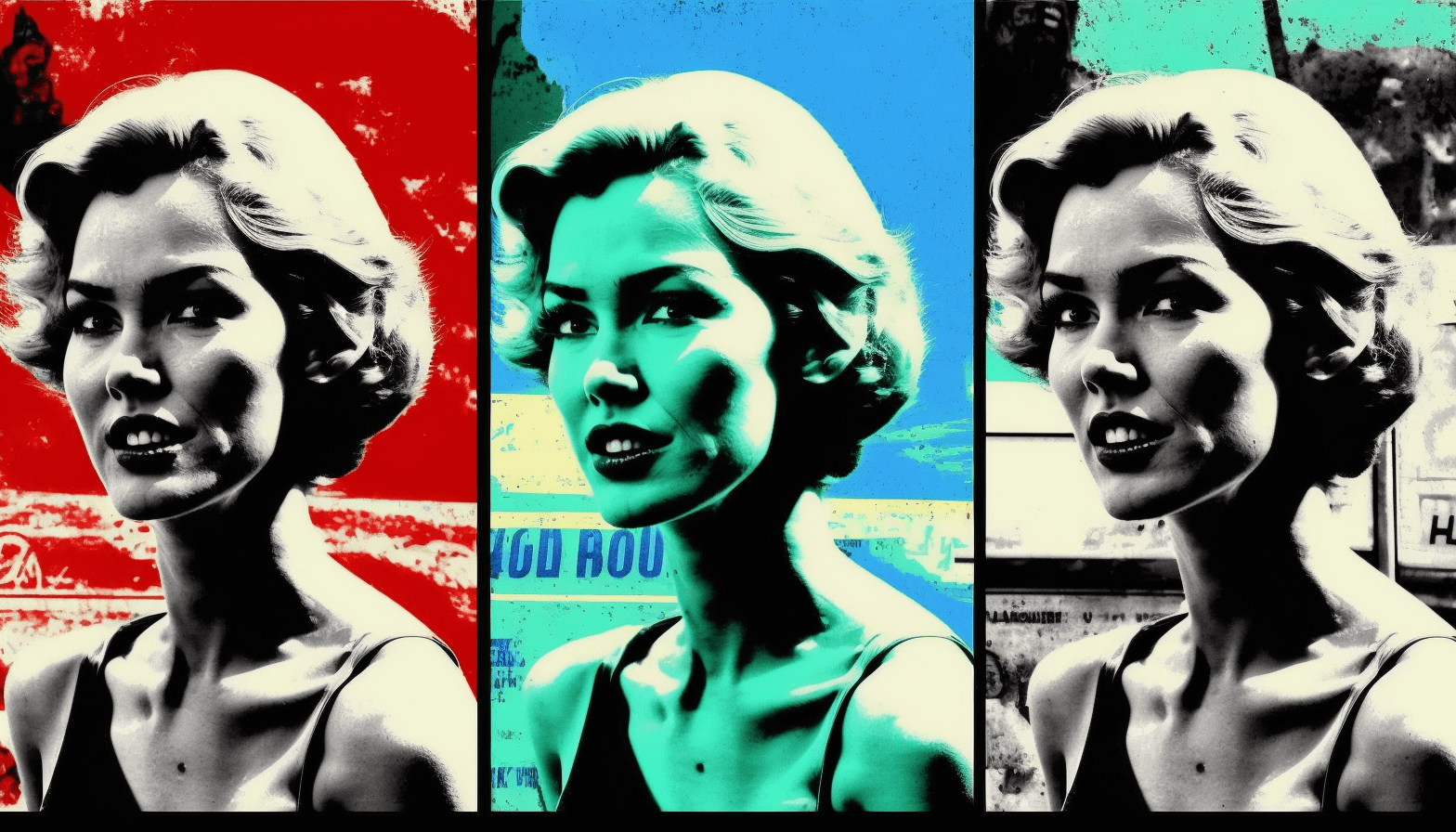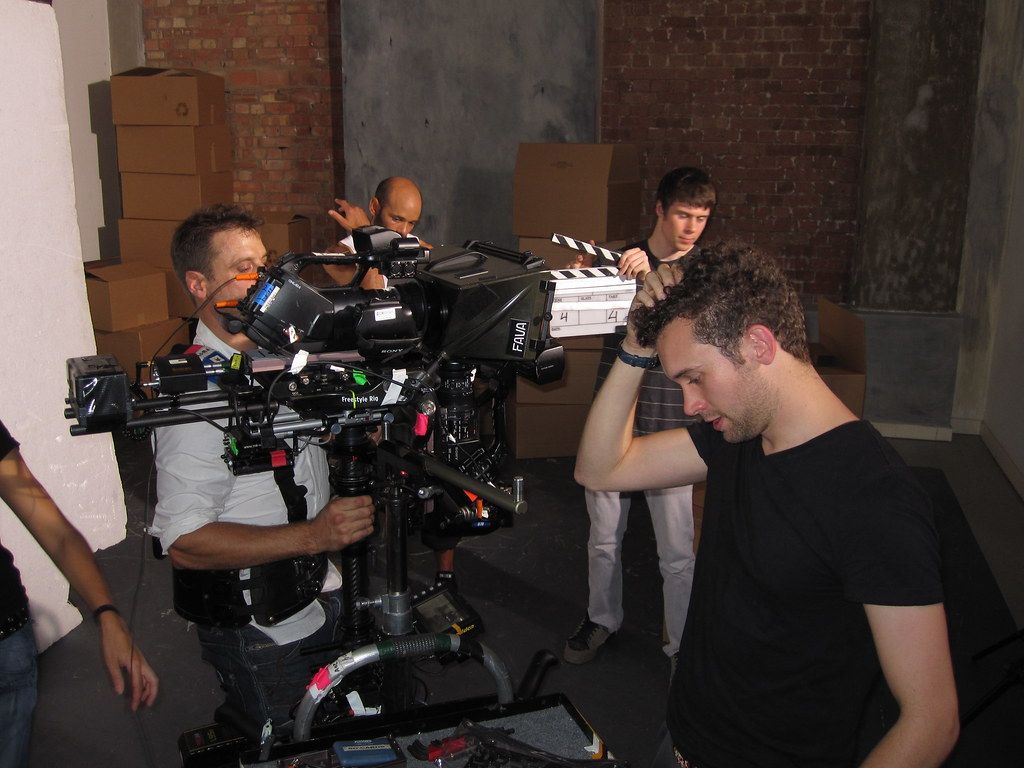Groundbreaking Inventions in Cinema History pt.2
The film industry has been around for over 100 years and it's hard to imagine all the significant events that have influenced the formation of our beloved industry. However, we have tried!


We continue to delve into the fascinating history of progress and cinema. In our new blog, we've covered some more of the interesting phenomena and inventions that have changed cinema forever.
Steadicam
Cinematography exists since the beginning of the 20th century, but until the 70-s cinematography technique was in a somewhat cramped position. There were only two ways to show a moving picture on the ground - either you mounted a heavy camera on a dolly carried on rails, or you filmed the picture on the move, armed with a lightweight camera. Both ways had their disadvantages - in the first case, the camera was strictly limited in its movements (and the rails could not be laid anywhere, and it was a long and laborious business), and in the second - the picture shot from the hands or shoulder jerked after each step of the cameraman. Sometimes this "jumping" shot was useful, for example, if we needed to convey the ragged rhythm of a military attack. In other cases, the cameraman's "parkinsonism" only irritated the audience, but no one could imagine how to get a smooth picture without a crane or rails.


In the mid-'70s, however, a young cameraman from Philadelphia, Garrett Brown, began to wonder about this question. As a result, Brown figured out how to get a stable image on the move: he had to attach the camera to his chest with a special waistcoat, connected and articulated with the camera by a spring-loaded iron "arm". He attached a massive tripod stand to the bottom of the camera, acting as a weight. When shooting on the move, holding the camera in front of it as a portable dropper, the "weight" at its lower end dampened the camera vibrations, and the jointed "arm" made the camera less dependent on vibrations while walking. The weight was the battery and a plug-in mini-monitor, since looking through the viewfinder while walking was not an option. They balanced the entire setup so that the camera was held by the third hand attached to the waistcoat, while the camera was pointed in the right direction with the cinematographer's hands. It was easy to drag the heavy unit, as the waistcoat absorbed the extra weight and helped to distribute it over the torso.
The Philadelphia native named his freshly made invention the "Brown's Stabilizer," and after videotaping his future wife Hellen climbing the steps of the local Museum of Art, he went to Los Angeles to sell the camera. The promo turned out to be spectacular, with United Artists, the studio deciding to cast him in the then-improvised film "Bound for Glory" (1976). The biopic of country singer Woody Guthrie showed in a very compelling way the new possibilities of the film camera. The camerawork won over the critics: Brown's camera was clearly handheld, but it sailed as smoothly as if it were rolling on rails. The film won an Oscar for camerawork without question.
United Artists had another project in the works, the boxing drama "Rocky" (1976) starring Sylvester Stallone. John Evildsen, who could make movies for very little money, was hired as a director. Seen a 10-minute promo by Garrett Brown, he came to the delight and immediately hired him.
The film was released in 1976 and was shot for only a million, the worldwide box office outstripped costs 111 times, becoming one of the most successful pictures in the history of world cinema. Eleven Oscar nominations resulted in three victories, in the categories of Best Picture, Best Director, and Best Film Editing. Those who had created a beautiful picture were left without prizes this time. In the intervening years, Rocky's jogging scene has been quoted and parodied many times in animated and feature films. In addition, Brown's patented device, dubbed the Steadicam, or "stable camera," became a household name in movie circles and, over the next few years, added to such cult productions as Stanley Kubrick's "The Shining" and Steven Spielberg's "Indiana Jones".
After that, Steadicam was no longer used by anyone but a lazy man. New films featuring this technology began to appear one after the other: "Casino" (1995), "Philadelphia" (1993), "Goodfellas" (1990), "Come and See" (1985), "Boogie Nights" (1997), "Pulp Fiction" (1994) - just the tip of the iceberg that Brown had built.
Bring Your Vision to Life with Filmustage!
The history of filmmaking is filled with groundbreaking innovations, and modern filmmakers now have access to powerful tools to streamline their process. Filmustage automates script breakdowns, budgeting, and scheduling, allowing you to focus on creativity while ensuring a smooth pre-production workflow.
Streaming Platforms

The past decade has also seen the popularity of streaming platforms. Where once platforms like Netflix were treated with distrust, if not disdain, now a huge number of people around the globe have a subscription to streaming platforms, which release both their own projects, and those for which the rights have been bought out. That said, competition is already brewing in the field: HBO MAX, Amazon, Disney, Hulu, and Apple TV have begun to introduce their projects to the public. Millions of dollars are already being invested in films that are released on online services, and they are of the same quality as the films in wide distribution.
However, this situation has already become a stumbling block for critics and organizers of various awards. In 2018, for example, there was a scandal involving the Cannes Film Festival and Netflix. The prerequisites came a year earlier, and the reason was the French cinemas' requirement to show movies on streaming services only 36 months after the start of distribution. For Netflix, on the other hand, it is fundamental to avoid theatrical distribution: the initial plan is to premiere online at the same time for all users.
As a result, while two streaming productions were still screened in 2017, 2018 saw Cannes lose several high-profile films at once, including the likes of Alfonso Cuarón's "Roma" (2018) (which ended up winning a bunch of awards at other festivals and awards and nearly won the Oscar for best film) and the Coen brothers' "The Ballad of Buster Scruggs" (2018).
On the other hand, the affordability of licensed content these days cannot be overlooked. Every platform has the right to show a huge number of films and series, and the user is free to choose what he or she wants to watch. It's even funny how Netflix's history confirms the analogy between streaming services and DVD movie rentals.

Nevertheless, today's competition between companies exposes the considerable ambition of many companies to become monopolists and buy up the rights to absolutely everything popular. Many viewers note that the variety and originality of projects have dropped significantly on Netflix, for instance. As controversial as this topic is, it is impossible to deny the huge impact of streaming platforms on film as an industry.
Neural Networks
Until recently, their main application in movies was to replace backgrounds, remove superfluous supporting characters or add missing details. But few people realize that artificial intelligence is now also being used to analyze & write scripts, or even to produce a full movie... Back in 2016, the online project Ars Technica showed a short film called "Sunspring", whose entire plot was written by a specially trained bot named Benjamin. The film is about the not-too-distant future, with Canadian actor Thomas Middleditch playing the lead role. To get a new script, the neural network downloaded the plots of 200 science-fiction movies and the algorithm created its own story based on them - with all the characters, dialogues, and locations. The authors of the project went on to teach Benjamin other film professions, and two years later, he not only "shot" an experimental short film, "Zone Out" (2018), on his own, but also voiced it and even wrote music for the film.
Deepfake: What Is This Technology and Why Is It Dangerours
A similar technology was used by Martin Scorsese, making Robert De Niro and Al Pacino look young in "The Irishman" (2018). They were rejuvenated using a system of three cameras: one took pictures and the other two processed the visual information. All the footage was then run through the software, which compared it to archive videos of still young actors and found a perfect match.
But Deepfake can work with more than just a face - it can even change an actor's body. For example, film director Timur Bekmambetov said that the actor had an MRI of all layers of the actor's body, down to the bones, skin, and fat - this allowed him to create a 3D model of the talent. Then it was modified to a degree to get the texture that the actor would have had if he had lost weight to 36 kg. Later, a neural network was trained on this model and replaced Priluchny's image, preserving animation and speech in all scenes where necessary.
Afterwords
Let us know whether you like or dislike this kind of blog, where we dive into groundbreaking events and inventions in cinematic history.
Filmustage is here to help modern filmmakers streamline their pre-production process with AI-powered script breakdowns, budgeting, and scheduling — ensuring efficiency while you focus on creativity.
Check out our past materials on the subject, and see you soon! 🚀🎬
From Breakdown to Budget in Clicks
Save time, cut costs, and let Filmustage’s AI handle the heavy lifting — all in a single day.